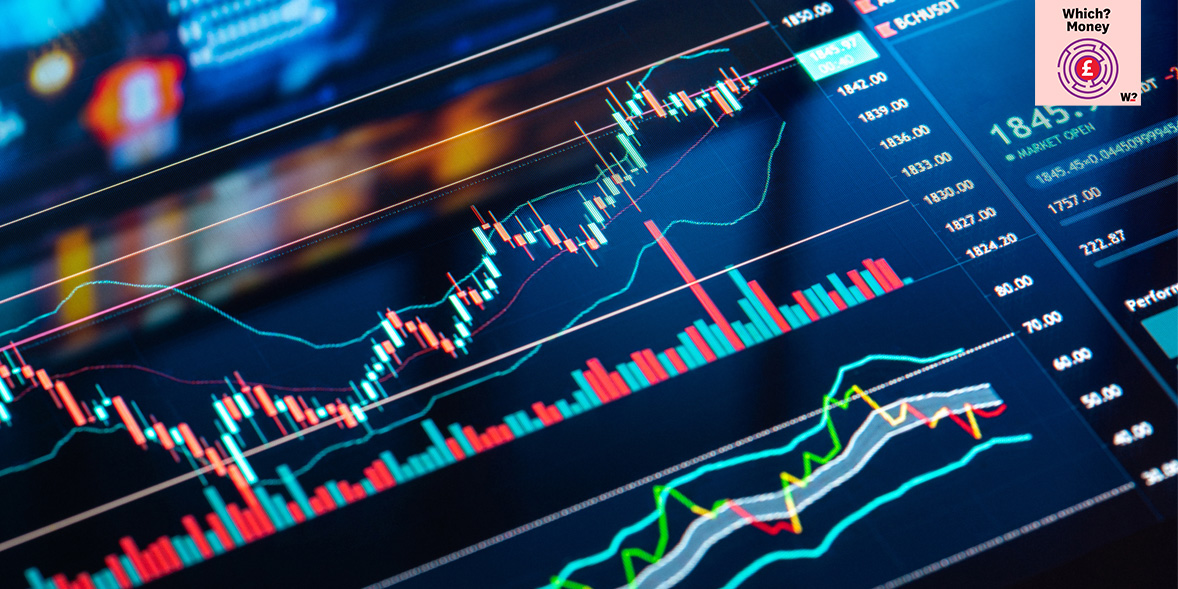
Are fund charges eating into your returns?

What are investment fund charges?
When you invest through an investment fund or investment trust, you pay the fund manager an ongoing fee.
This is usually paid by the fund manager selling off a very small proportion of your holdings.
While these fees are small - increasingly less than 1% of the value of your holdings per year - they can impact your returns, and should be factored into your choice of fund.
Here we explain the fees to look out for, how much you should be willing to pay, and how to pay less.
What difference do fund charges make?
Fund charges matter because, whilst fund performance can vary, you'll have to pay the charges come rain or shine.
Over time, fund charges can make a huge difference to your returns.
Here's how £1,000 in a fund costing 0.1% and a fund costing 1% would perform in three different investment performance scenarios, ranging from poor (5% loss), to neutral (0% growth) to good (5% growth):
This guide explains how fund charges work and how to save money, whilst covering associated fees and taxes you might encounter.
- Find out more: investment funds explained
What is the annual fund charge?
You're most likely to see a measure called the ongoing charge figure (OCF).
This includes the Annual Management Charge, from which firms make their profits.
The OCF also takes into account various additional costs such as trustee and auditor fees, that are taken directly out of the fund. These extra charges can easily amount to around 0.1% on top of the AMC.
Fund managers are legally obliged to show the ongoing charge in their fund literature and they must publish it once a year. It can be found in a document called the Key Investor Information Document (KIID).
These costs aren't included in the ongoing charges figure:
Trading fees and stamp duty reserve tax
Every time the fund buys or sells a share they incur charges and potentially stamp duty.
Passively-managed tracker funds tend to have lower trading fees than actively-managed funds as they switch investments less often.
Performance fees
Some unit trusts and OEICs, and many investment trusts, also levy additional performance fees on top of the regular annual charges - typically taking an extra 20% of everything above a certain level of performance.
How can I reduce fund charges?
Some types of fund are far more expensive than others.
Funds with higher charges aren't necessarily better performing; charges can reflect the management style, asset classes invested in or simply the prestige of the fund manager.
For instance, the annual management charge (which makes up the majority of the OCF) typically ranges between:
- 0.75% to 1.25% in most actively managed funds.
- 0.01% to 0.85% in most passively managed 'tracker' funds
- 0.8% to 1.8% in most investment trusts
While it's important to control costs, your overall investment portfolio should reflect your long-term investment aims, which may call for more expensive funds or trusts.
Would you be better off buying shares directly?
Cutting out the fund manager entirely and holding your own shares could save you money.
However, you should consider whether you have the time or expertise to invest in shares directly. Funds can hold thousands of shares, the selection and oversight of which involves large teams of experts.
Also keep in mind that investment platforms can charge a fee each time you buy and sell a share, as well as a fee to hold shares, which can make frequent trading more expensive. Some platforms are better suited to frequent traders.
What other fees will I have to pay?
If you buy a fund through an investment platform or broker, you'll need to pay extra fees.
Investment platforms charge either a percentage annual fee, or a fixed amount each year. If you have a portfolio worth around £50,000 or less, a percentage-based charge will generally work out cheaper, while larger portfolios fare better with a flat fee.
Take this example, which compares a platform charging a fixed fee of £200 with one that has a fee equivalent to 0.39% of the portfolio:
The difference in fees between the cheapest and most expensive platforms can add up to thousands of pounds for a large portfolio. We compared investment platform fees and charges across various platforms and portfolio sizes to find who had the cheapest, and who had the most expensive fees.
If you invest with a financial adviser, you will need to pay fees to them on top of all of the other charges.
- Find out more: how much financial advice costs
Will I have to pay tax on my investments?
If you end up with enough money back on your investments, after you've paid your charges, you'll need to pay tax.
You can earn up to £500 in 2024-25 from dividends without paying dividend tax; beyond this you'll have to pay 8.75%, for basic rate taxpayers, 33.75% for higher rate or 39.35% for additional rate.
You may also have to pay capital gains tax when you sell investments. You can earn up to £3,000 from capital gains tax-free in 2024-25; beyond this you'll need to pay 10% for basic rate taxpayers or 20% for higher or additional rate taxpayers (18% or 24% for residential property respectively). If you are in a couple, you can earn up to £6,000 in 2024-25 before the tax applies.
Rather than relying on tax allowances, you can invest in a stocks and shares Isa - an entirely tax-free account.
- Find out more: what is a stocks and shares Isa?

















